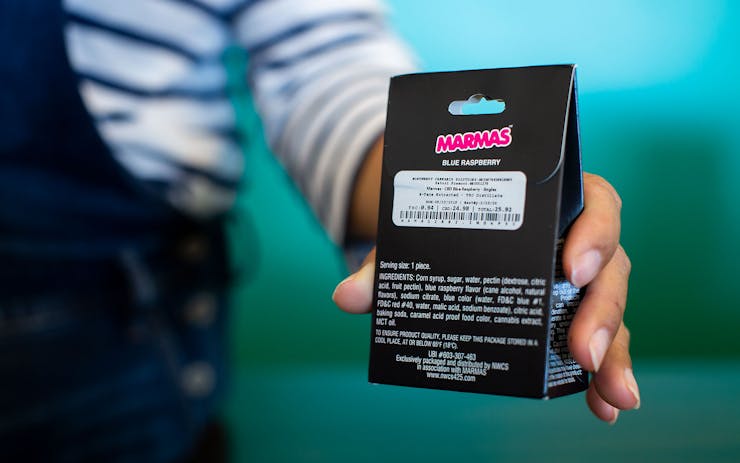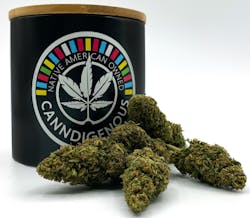It’s the best of times and the sketchiest of times to shop for CBD. Consumers nowadays have to be savvy readers of CBD product labels, whether shopping online, over the counter, or in licensed adult-use and medical cannabis stores.
CBD is becoming more and more popular today. But are consumers sure of what they’re buying?
Keep an eye out for label must-haves like dosing information, and red flags like vague CBD sourcing. Read on to become fluent in the new language of CBD labels.
CBD label requirements
CBD label requirements vary by state. The strongest label requirements currently come in state-licensed adult-use programs and medical cannabis systems. States like California mandate many label features you’ll read about below.
Beyond state-licensed systems, there are no federal regulations around CBD. But CBD product manufacturers often mimic the look and feel of federal dietary ingredient labels.
The most suspicious CBD product labels won’t look like either a state-licensed product or a mainstream food label. A vape cart available online called “Morgue Juice” that says it contains “hemp oil” may contain CBD, or it may not.
CBD dosage
What’s one dose of CBD? How many doses are in a package? Now you’ve got your thinking cap on.
CBD dosage is the most important thing a label can tell you, including the total milligrams (mg) of CBD in the entire package, plus serving size, mgs per serving, and number of servings. One note, though: Leafly tests have found that CBD labels are often inaccurate.

(Leafly) A CBD product label showing amount of CBD per serving, serving size, servings per container, other ingredients, and a QR code.
Milligrams of CBD
Every CBD product package should clearly state the total amount of CBD in milligrams contained in the entire package. A milligram is one-thousandth of a gram.
Shop highly rated dispensaries near you
Showing you dispensaries nearServing size/servings per container
Nearly as important as total CBD is the serving size, amount of CBD per serving, and the number of servings in a package.
- The serving size lets you know what one serving is (for example, one gummy bear is a common serving size).
- The amount of CBD per serving is what that gummy will contain (i.e., 10 mg).
- The number of servings per package is pretty self-explanatory (i.e., 30 gummies per package).
State-licensed and medical cannabis systems generally set one dose of CBD at 10 mg. But there is no standard dose of CBD. Your desired dose will vary by condition, weight, route of administration, and other factors.
CBD oil source
Exactly where the CBD comes from is important, too.
CBD products in the medical and adult-use cannabis markets come from plants bred for strong effects, aromas, and flavors. They often contain THC, cannabis’ main active ingredient, which causes euphoria. By contrast, hemp-derived CBD comes from industrial hemp plants consisting of less than 0.3% THC.
Other important pieces of jargon include “full spectrum” and “broad spectrum,” versus “CBD isolate.”
- Full spectrum CBD includes trace levels of other cannabinoids and terpenes, including THC.
- Broad spectrum CBD includes trace levels of other cannabinoids and terpenes, but no THC.
- CBD isolate consists of nearly pure CBD crystals with no other cannabinoids and terpenes.
No overarching federal authority polices the use of these terms, unlike, for example, the USDA with the designation “organic.”
One red flag for a label: vague CBD sourcing or no mention of CBD at all. Watch out for “hemp extract” or “hemp oil.” By using these phrases, the manufacturer is deflecting any claim to deliver actual CBD. Amazon.com is loaded with low-quality “hemp oil” products that make medical claims but contain no CBD.
Looking for legal cannabis? Leafly has all your local menus
Important things to look out for
Batch and lot number
Advanced state-licensed adult-use or medical cannabis systems mandate batch and lot numbers on product packages, including CBD products. For consumers, batch and lot numbers are a sign of accountability. If there’s a recall, regulators can hold an entire batch or lot. Without a batch and lot number, no one can tell when or where it was made.
Manufacturing date
Depending on the product and how you store it, CBD degrades over time. The manufacturing date is a great way to know how old a product is. When it comes to CBD-rich flower, the fresher, the better. CBD tinctures and edibles should be consumed within months, not years.
License numbers
State-licensed cannabis product manufacturers must list their license number on the label, to distinguish themselves from non-licensed makers. Look for a name and series of numbers—most states allow you to look up licensees by their number.
Third-party certification
A third-party certification attests to the accuracy of the manufacturer’s label claims. Testing for adult-use and medical cannabis is a legally mandated form of third-party certification. Outside the state systems, several voluntary, private third-party certification programs exist, including Leafly’s new Leafly Certified Lab program.
One popular type of third-party certification is a Certificate of Analysis (COA) from a cannabis testing lab. Lab quality varies, however. Beware of recycled, old COAs attached to current inventory.
Other good stuff to look out for
Other ingredients
Beyond raw CBD oil or CBD isolate, most CBD products are going to come with other ingredients. Gummies will commonly contain glycerin, colors, and flavors. Tinctures often come mixed with some other oil, spirits, or glycerin. Scrutinize other ingredients for quality, purity, and the presence of potential allergens.
QR codes
Look for special square barcodes that your phone can scan. QR codes are optional, but they remain one of the best ways to assure product quality. Scanning a product’s QR code will usually download its test results—a great sign of quality.
Warning labels
CBD has drug interactions and is not for everyone. Read and heed common sense warnings and disclaimers.
Contact info
Beyond license numbers, basic contact information like a website for a CBD product’s maker should be on the label. This info allows consumers to better research the product and make an informed choice.
CBD ingredients to avoid
Watch out for the aforementioned “hemp oil” and “hemp extract”—two vague terms commonly used on products with zero CBD.
In CBD vape pens, avoid additives—including thinners, thickeners, flavorings, vitamins, or other essential oils. According to media reports, people are selling all manner of liquids in vapes as wellness products, and FDA oversight is severely lacking. Colorado cannabis regulators intend to ban three problematic vape pen additives: PEG, MCT oil, and tocopheryl-acetate. Washington state banned tocopheryl-acetate earlier this week. Other states will likely follow.
Vaguely worded “natural ingredients” are another red flag on CBD vapes. Many “natural ingredients”—like vegetable oil—do not belong in a vape.





